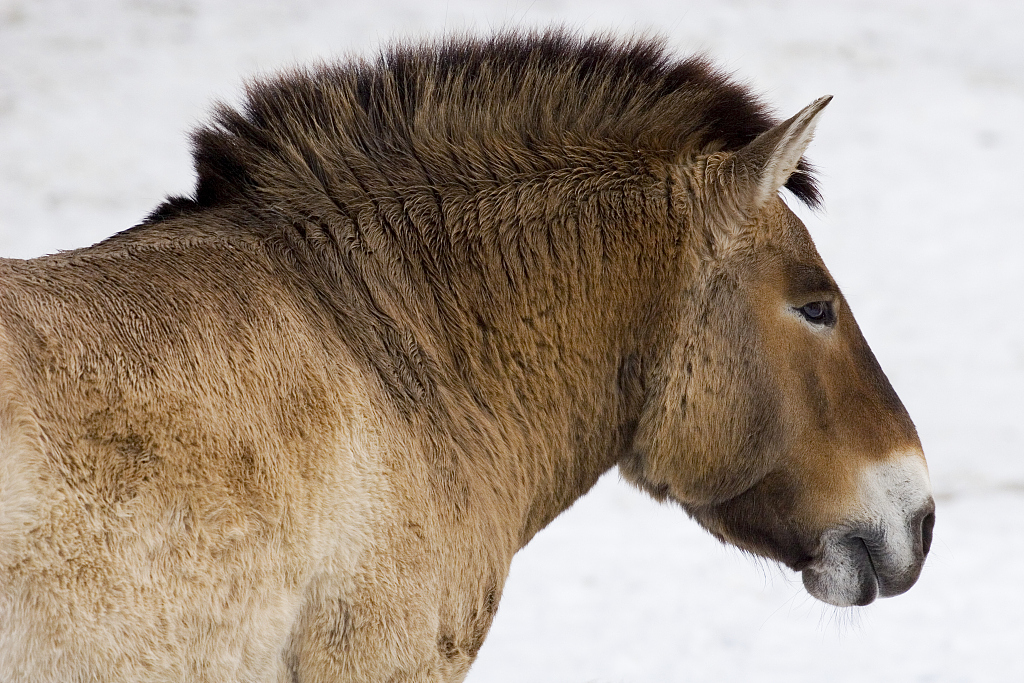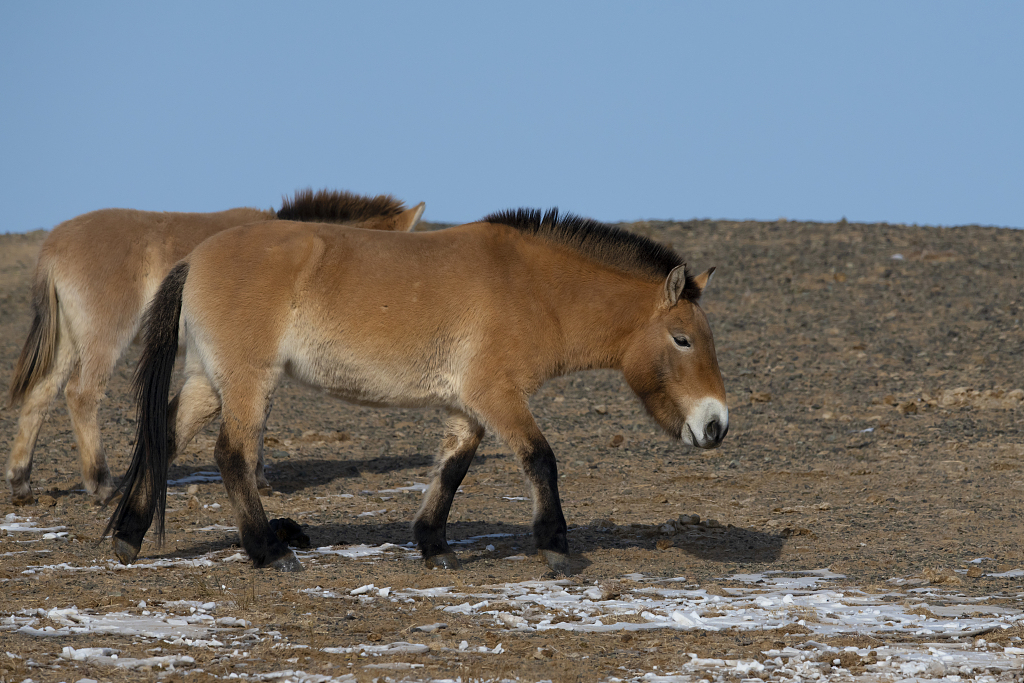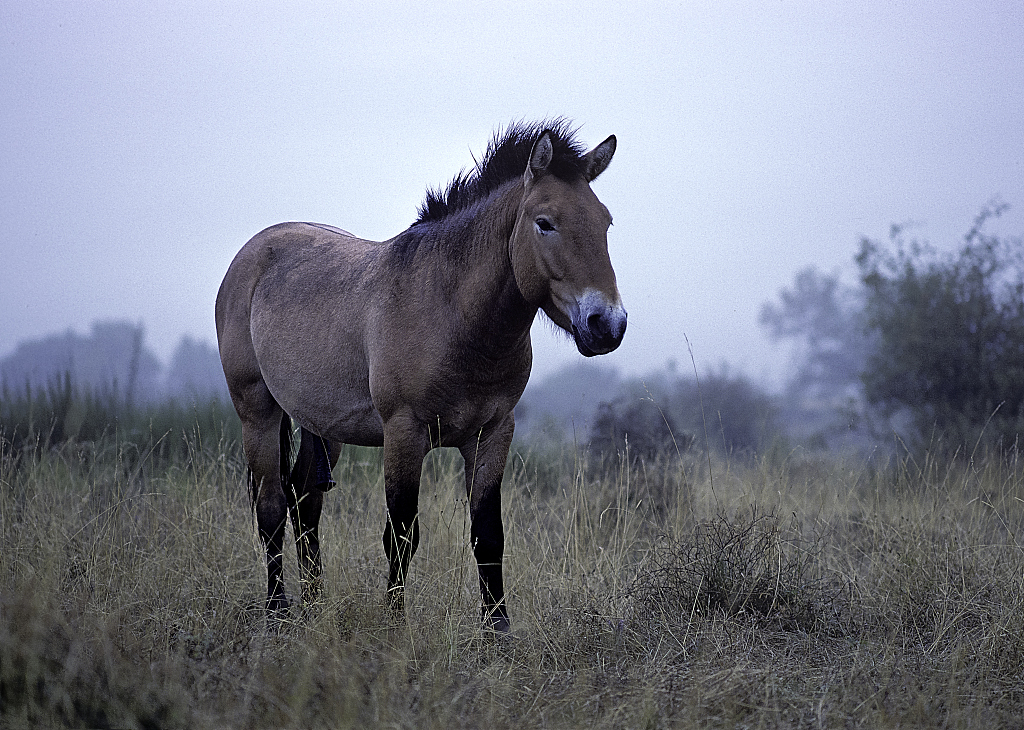Throughout history, people have had a passion for taming wild horses. It was on a horseback that the Mongols built the largest contiguous land empire in the 13th and 14th centuries. Horses have expanded mankind's frontiers.
In the late 19th century, some ambitious explorers embarked on a quest for unknown species and undiscovered "treasure." Nikolay Przhevalsky, a Russian explorer, received the skin and skull of a horse from a Russian official during his second expedition to Asia. The horse, which was unrecorded before, got the name "Przewalski's horse" in honor of its discoverer.

Closeup of a Przewalski's horse. /VCG
Closeup of a Przewalski's horse. /VCG
In the 1880s, Przhevalsky set out to chase these horses on his third expedition to Central Asia, but he might have mistaken an onager for a horse because the place he discovered them had never seen traces of Przewalski's horse. The Grum brothers were said to be the first people who captured Przewalski's horses.
The hunting game for Przewalski's horse soon unfolded between 1897 and 1903. It remains a mystery how many of them were captured and how many died on the way, but at least 53 live Przewalski's horses made it to Europe. They were then scattered in about 15 zoos and private abbeys in Ukraine, Russia, Germany, Britain, France and other countries.

Two Przewalski's horses making their way. /VCG
Two Przewalski's horses making their way. /VCG
Native to the steppe along the Mongolia-China border region, Przewalski's horses were also threatened by pasturing and human activities. Livestock occupied grasslands with ample water, which encroached on the previous roaming grounds of wild Przewalski's horses. In 1969, one last wild Przewalski's horse was spotted in Mongolia, and the last time people saw Przewalski's horse in the wild in China was in 1957. The species was on the brink of extinction in the wild.
What was comforting was the population of captive-bred Przewalski's horses. By 1965, 134 Przewalski's horses were raised in captivity and they became the hope of the species.

A standing Przewalski's horse. /VCG
A standing Przewalski's horse. /VCG
About 'Lost then Found' series:
Many species on Earth went extinct because of environmental changes, evolutionary problems, habitat loss or human activity. The disappearance of species from Earth is ongoing, but some species are lucky to have survived thanks to conservation efforts. In this series, CGTN will guide you through the journey of saving these creatures from extinction.
For more:
From 18 to 8,000: The homecoming story of milu deer
Return of milu deer to the wild
(Cover image designed by CGTN's Yin Yating.)
(If you want to contribute and have specific expertise, please contact us at nature@cgtn.com.)

